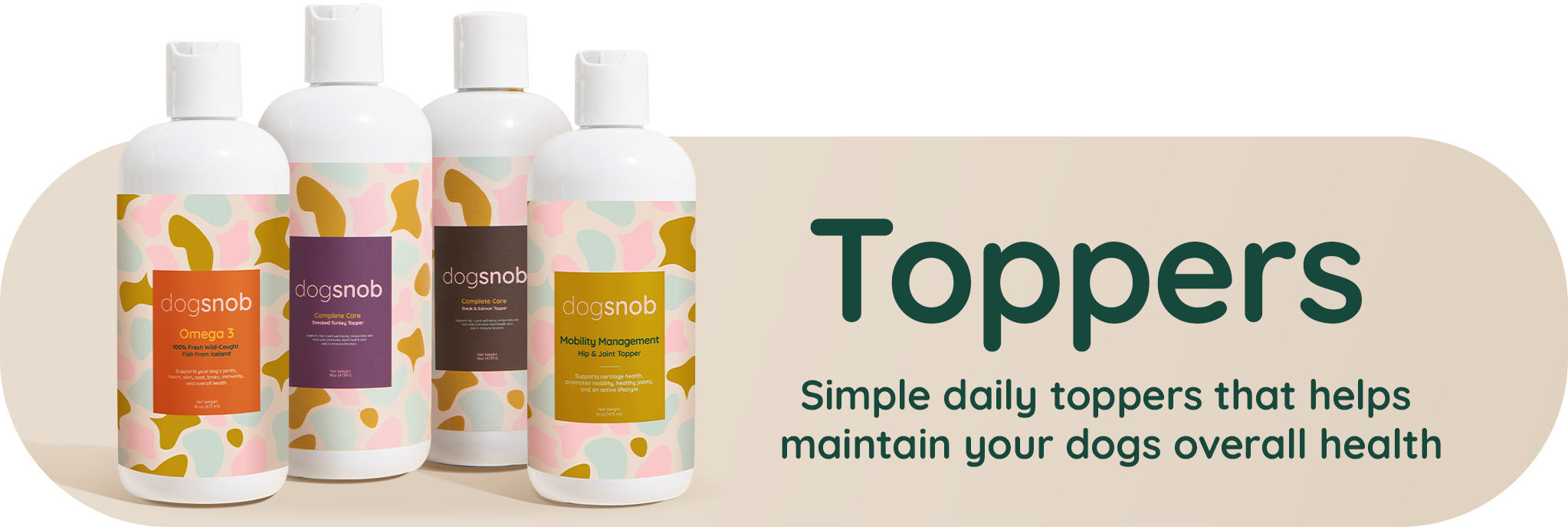Is chocolate bad for dogs? Can chocolate cause poisoning in your dog? Find answers below.
Chocolate poisoning in dogs is way more common than you think. To determine if chocolate is really a dog killer, we broke it down below how much chocolate is too much and what to do if your fur baby accidentally ingested a sweet and irresistible treat.
Dogs and Chocolate
Chocolates are known to be poisonous for dogs. Hundreds of cases of chocolate poisoning are reported each year. It’s reported that up to 50% of dogs die from chocolate poisoning when not treated immediately. Ingesting chocolates can cause severe health complications for dogs of all sizes. However, the type of chocolate and the dog’s body weight is something to factor in when it comes to the toxicity of chocolate.

Ingredients that make chocolate poisonous for dogs
Chocolate contains two ingredients that are considered toxic to dogs. Caffeine, a stimulant, may be a favorite ingredient for us, especially in the morning, but caffeine can be harmful for dogs. Think of what three cups of coffee will do to your system, then picture that same effect, only heightened, to your dog. When dogs consume caffeine, they become hyperactive due to the increased heart rate. They will get jittery and pace excessively. Caffeine can raise their blood pressure which can lead to cardiac arrhythmias or irregular heartbeat. When ingested in large quantities, caffeine can be deadly, especially if not treated right away.
Another toxic ingredient that can be found in chocolate is theobromine. Theobromine is a chemical compound found primarily in chocolate. According to National Center for Biotechnology Information (NCBI), Theobromine “primarily affects the central nervous system, cardiovascular system, and respiratory system, as well as having a diuretic effect.”
Theobromine for human consumption is far safer than when dogs consume it. This is because our bodies can metabolize the chemical compound within 20 to 40 minutes, while dogs metabolize only half of it in 17 hours. And due to the slow metabolism, symptoms can take up to 24 hours before it starts to show and recovery time can take up to 3 days. The amount of theobromine present in chocolates differs from the type of chocolate. For example, cocoa powder and dark chocolate have a higher concentration of theobromine, while white chocolate has the lowest concentration.
Theobromine compound is not only found in chocolate but it can also be found in cocoa shell mulch—the same mulch that gardeners and landscapers love to use in the warmer months. Cocoa shell mulch contains high levels of theobromine. It has been reported that unprocessed cocoa beans contain around 1% to 4% theobromine and 0.07% to 0.36% caffeine. That accounts for 25 milligrams of theobromine per gram. Processed cocoa mulch, however, has a lower concentration (about 0.19% to 2.98%). It is good to note that cocoa shell mulch smells the same as chocolate and can attract dogs if unsupervised.
Kinds of chocolate that can poison and kill a dog
The level of toxicity of chocolate can depend on the type. As a rule of thumb, the darker and bitter the chocolate is, the more toxic it can be. This is because the cocoa beans were processed less, which means they carry a higher concentration of theobromine.
Cacao powder, in its purest form, is the deadliest because it contains the highest concentration of theobromine. Dark chocolate and baker’s chocolate contain a higher concentration too. It will only take a small amount of dark chocolate to poison a dog. For example, a 44-pound dog can easily be sick when fed with less than an ounce of dark chocolate.
Milk chocolate has much less concentration with 2 milligrams per gram of theobromine. Although it is considerably less concentrated, it can still be lethal to 10-pound dogs.
White chocolate has the least amount of theobromine with 0.1 milligrams per gram. The reason for this is that white chocolate is traditionally made without chocolate liquor and cocoa solids. When chocolate aficionados are asked whether white chocolate is considered real chocolate, most would say no. The United States Food and Drug Administration, however, ordered for any white chocolate product to have at least 20% cocoa butter hence why there is still a small amount of theobromine present in white chocolates.
How much chocolate is too much
Okay, say you found your dog accidentally eating chocolate, how much chocolate is too much? A small amount of chocolate is not exactly fatal. Your dog may be able to filter out the toxins through induced vomiting and passing tool. However, this will always depend on the type of chocolate consumed and your dog’s body weight. The higher the theobromine content, the more poisonous it is. To exactly figure out how much is too much, PetSci has a Chocolate Toxicity Calculator tool that you can check out. All you need to do is enter your dog’s current body weight, the type of chocolate consumed, and the amount eaten. The calculator will determine if your pet has consumed a toxic amount of theobromine. To be exactly sure though, it is best to call a veterinarian right away.
What factors determine the level of toxicity
Two factors determine whether your furry pet is in severe danger: the type of chocolate they ate and their body weight. Small dogs are most likely to be in danger no matter how much chocolates they consumed.
Types of chocolate
Below is a list of types of chocolates that are toxic to dogs and the levels of theobromine present for each (gathered from My Food Data).
- Baking Chocolate (Unsweetened) = 376 milligrams per 1 ounce square
- Dark Chocolate (70% - 85% Cocoa) = 228 milligrams per 1 ounce square
- Dark Chocolate (60% - 69% Cocoa) = 179 milligrams per 1 ounce square
- Sweet Chocolate Candies = 175 milligrams per 1.5 ounce bar
- Hot Cocoa = 170 milligrams per cup
- Dark Chocolate Coated Coffee Beans = 147 milligrams per ounce (28 beans)
- Cocoa Powder = 142 milligrams per tablespoon
- Dark Chocolate (45% - 59%) 140 milligrams per 1 ounce square
- Semi-Sweet Chocolate Chips = 138 milligrams per 1 ounce (handful)
- Chocolate Wafers = 21 milligrams per wafer
Dog’s Weight
A small dog is most likely to get a lethal reaction from eating less than an ounce of chocolate, while a large dog will only feel mild symptoms.
The table below from Care Animal Hospital illustrates how each type of chocolate is lethal for dogs.

Furthermore, a study published by McGill University calculated how much theobromine affects certain dogs.
The study demonstrated 3 dogs with different body weights— a 7 kilogram Maltipoo (Baci), a 25 kilogram Golden Retriever (Chanelle), and a 50 kilogram Malamute/German Shepherd mix (Jupiter). They concluded that if all 3 dogs consume an 85-gram milk chocolate bar, the 7 kilograms Maltipoo would have ingested 22 milligrams per kilogram of theobromine, while the Golden Retriever would have consumed 6.3 milligrams per kilogram, and the Malamute mix would only consume 3.2 milligrams per kilogram of theobromine.
In simpler terms, if the 50-kilogram dog eats a third of a cup of cocoa powder, he will probably be fine. The 25-kilogram dog will probably be sick and the small 7-kilogram dog will experience seizures, or worse, death.
(Table from McGill University)

Signs and symptoms of chocolate poisoning
Since dogs do not metabolize chocolate faster than humans, signs, and symptoms may not appear for another 6 to 12 hours. Feeling of discomfort may be visible in terms of twitching or muscle tremors, agitation, increased pacing and vocalness, hyperactivity, and increased urination.
Other symptoms include the following:
- Vomiting
- Diarrhea
- Restlessness
- Rapid panting
- High body temperature
- Unsteadiness on feet
- Tremors
- Seizures
- Elevated or abnormal heart rate
- Collapse or death
It is also good to note that older dogs and dogs with pre-existing heart conditions have a high risk of sudden death from chocolate poisoning. Pregnant dogs are also at high risk because theobromine can affect the puppy.
The good news though, vomiting and increased urination are good symptoms to have because this helps dogs get rid of the toxins quickly.
What to do if your dog eats chocolate
If your dog accidentally found your stash of chocolate treats, the first thing you should do is determine what type of chocolate they ate, how much of it they consumed, and how long ago they had it. Immediately call a veterinarian and let them know what happened.
There is no exact cure for chocolate poisoning. In most cases, diarrhea will occur so it is important to give them fluids regularly. In severe cases, the veterinarian will administer fluids with intravenous drugs to prevent seizures and heart failure.
Inducing Vomiting in dogs
Induced vomiting is also a common treatment for dogs with chocolate poisoning. If your dog is not vomiting on its own, it is important to give them something that will help them remove the toxins in their system. A veterinarian can prescribe them activated charcoal.
Activated charcoal is known for its detoxifying properties. This will help to remove the toxins in their body without it being absorbed into the bloodstream. Some also suggest giving dogs a one-to-one solution of hydrogen peroxide and water, or syrup of ipecac.
Though this is the most common treatment for dogs, please be cautious that induced vomiting can also cause esophageal ulcers. Consult with your veterinarian first.
How to keep your dog safe from chocolate poisoning
Though some dogs may not face severe complications from chocolate poisoning, it is still important to keep them away from chocolates at all times. Remind kids or visitors to not feed your dog with chocolate, or better yet, train your dog to behave accordingly with food.
As for cacao shell mulch poisoning, do not leave your dogs unattended when they are outside in the garden. If possible, opt for processed cacao shell mulch or better yet, use an alternative like a rubber mulch.
How to store chocolate at home
Store your chocolates in a safe place where your dogs can’t reach it. It is your responsibility as a dog owner to keep them away from potential danger. Store in closed-door cabinets or anywhere that is out of sight. Do not leave it out on counters, tables, or even bags where they can easily snoop it. Remember that dogs are naturally curious pets and they will eat just about anything that you will put in front of them.
Summary
Can chocolate kill a dog? What needs to be done to prevent it?
To summarize, chocolates are toxic to dogs due to the caffeine and theobromine. The darker and more bitter the chocolate is, the more poisonous it is for your fur best friends. Although not all types of chocolates have the same level of theobromine concentration, it is still important to keep this away from dogs. The severity of chocolate poisoning will depend on the type of chocolate and the weight of the dog.
Symptoms for chocolate poisoning include vomiting, diarrhea, agitation, abnormal heart rate, agitation, tremors, and increased urination. Induced vomiting can help wash out the toxins faster by giving your dog activated charcoal. As soon as you find out that your dog ingested chocolates, call your veterinarian immediately and let them know which type of chocolate was consumed and how much. The symptoms can take up to 6 to 12 hours to show up, but older dogs and dogs with heart conditions can immediately collapse or die after ingestion.
To prevent chocolate poisoning, store your chocolates in a safe place where your dogs can’t reach it. Do not leave chocolates unattended where your dog can sniff them and remind kids not to feed chocolates to the dogs—no matter how much they beg.





